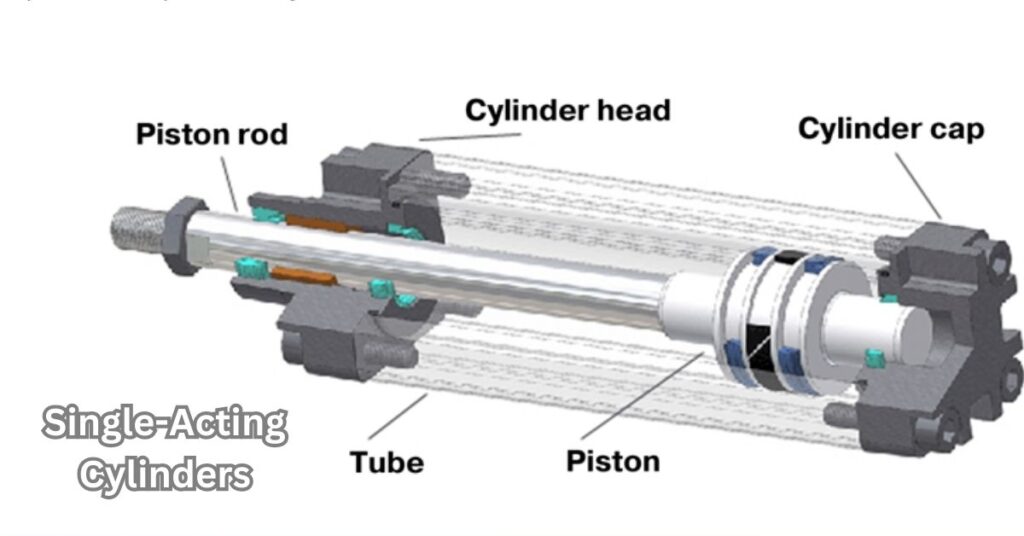In the realm of hydraulic and pneumatic systems, single-acting cylinders play a pivotal role in converting fluid or air pressure into linear mechanical motion. These versatile devices find widespread use in various industrial, commercial, and automotive applications, offering a cost-effective and efficient solution for a wide range of tasks. In this article, we delve into the intricacies of single-acting cylinders, exploring their design, operation, and advantages in different contexts.
What is a Single-Acting Cylinder?
A single-acting cylinder is a type of hydraulic or pneumatic actuator that generates linear motion in one direction using fluid or air pressure. Unlike double-acting cylinders, which exert force in both directions, single-acting cylinders rely on external forces, such as springs or gravity, to return the piston to its original position once the pressure is released. This makes them simpler in design and more economical to manufacture, while still providing sufficient power and performance for many applications.
Design and Components
Single-acting cylinders consist of several key components, including a cylinder barrel, piston, rod, seals, and end caps. The cylinder barrel houses the piston and provides a chamber for the fluid or air to act upon. The piston is fitted with seals to prevent leakage and facilitate smooth movement within the cylinder bore. A rod extends from the piston through one end of the cylinder, transmitting the linear motion to the external load or mechanism.
Operation
The operation of a single-acting cylinder is relatively straightforward. When fluid or air pressure is applied to the cylinder, it exerts force on the piston, causing it to move in the desired direction. The piston pushes against the load, performing the intended work, such as lifting, pushing, or pulling. Once the pressure is released, the external force, such as a spring or gravity, returns the piston to its original position, ready for the next cycle of operation.
Applications
Single-acting cylinders find numerous applications across various industries and sectors. Some common uses include:
- Lifting and Lowering: Single-acting cylinder are often employed in lifting platforms, dump trucks, and material handling equipment to raise and lower heavy loads.
- Clamping and Holding: They are used in clamping fixtures, presses, and assembly machines to apply controlled force and hold components securely in place during manufacturing processes.
- Pushing and Pulling: Single-acting cylinder are utilized in machinery and automation systems for pushing, pulling, and positioning tasks, such as opening and closing doors, gates, and valves.
- Earthmoving Equipment: In construction and agriculture, single-acting cylinder are found in hydraulic systems of excavators, bulldozers, and agricultural machinery for tasks like tilting blades and controlling implements.
Advantages of Single-Acting Cylinders
Single-acting cylinders offer several advantages over their double-acting counterparts:
- Simplicity: Their design is simpler and more straightforward, making them easier to install, maintain, and repair.
- Cost-Effectiveness: Single-acting cylinder are generally more affordable than double-acting cylinders, making them a cost-effective solution for many applications.
- Space Efficiency: They require less space due to the absence of a return stroke, making them suitable for compact or space-constrained environments.
- Reliability: With fewer moving parts and simpler construction, single-acting cylinder are often more reliable and less prone to mechanical failures.
Conclusion
Single-acting cylinders are indispensable components in hydraulic and pneumatic systems, providing efficient and reliable linear motion for a wide range of applications. Their simplicity, cost-effectiveness, and versatility make them an attractive choice for engineers and designers seeking practical solutions to diverse challenges. Whether in lifting, clamping, pushing, or pulling tasks, single-acting cylinder continue to play a vital role in driving efficiency, productivity, and innovation across industries worldwide.







